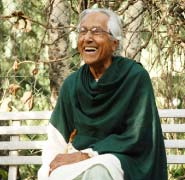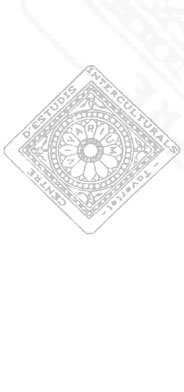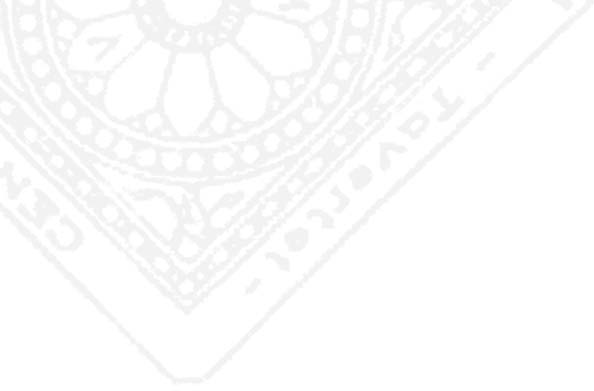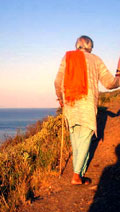



VITAL AND INTELLECTUAL JOURNEYS
5. His return to his Catalan roots to complete his vital cycle
When Panikkar retired in 1987, he returned to his roots in Catalonia, settling in Tavertet, a hamlet in the Catalan pre-Pyrenees that he had already visited in 1983. In Tavertet he lives almost as a monk, while at the same time he actively participates in the cultural and religious life of Catalonia, a fact witnessed by his many publications in Catalan newspapers and journals. He returns to his Catalan roots in order to complete his vital cycle, his karma; in order to “make my life round or rooted, returning to the place where I was born”.
In 1989 he founded the inter-cultural study and research centre called Vivarium, following a project based on the awareness that the problems we face today should not be merely approached using the tools of a single culture. Over the years Vivarium has increasingly developed, gathering together many people every month, mainly from Barcelona and the surroundings but also from other countries, attracted by the renowned “Talks” held by Pannikar. A group of scholars of Pannikar’s thought has also been founded called Vivarium Accademicum while Vivarium Artium will hold monthly meetings on various artistic topics.
Although officially retired as an academic, Raimon Panikkar has continued to write and publish; in the 90s he was particularly prolific. Almost half of his books have been published since then, sometimes collecting and reworking previous papers, sometimes working ex novo:
—La torre di Babele. Pace e pluralismo, (San Domenico di Fiesole 1990);
—Sobre el diálogo intercultural (Salamanca 1990);
—A Dwelling Place for Wisdom (Louisville 1993 and Delhi 1995), with editions in German (1991 and 2002), Italian (1993 and 2005), Dutch (1997), Catalan (1997), Spanish (1998 and 1999) and Chinese (2000);
—La nova innocència (Barcelona 1998; with editions in Spanish and Italian, including La nuova innocenza. Innocenza cosciente, 2005), gathering a number of important papers published originally in journals;
—The Cosmotheandric Experience. Emerging Religious Consciousness (Maryknoll 1993; La intuición cosmoteándrica. Las tres dimensiones de la realidad, Madrid 1999);
—Ecosofia: la nuova saggezza. Per una spiritualità della terra (Assisi 1993; Ecosofía. Para una espiritualidad de la tierra, Madrid 1994);
—Cultural Disarmament: The Way to Peace (Louisville 1995); Paz y desarme cultural (Santander 1993), plus editions in Chinese (1999) and Italian (2003);
—Les icones del misteri: L’experiència de Déu (Barcelona, 1998; with editions in Spanish, Italian, German and French), one of his most beautiful books on God;
—Meinen wir denselben Gott?. Ein Streitgespräch (München, 1994), a dialogue with Jewish theologian jueu Pinchas Lapide;
—La experiencia filosófica de la India (Madrid 1997);
—Il “daimôn” della politica: agonia e speranza (Bologna 1995; L’esperit de la política, Barcelona 1999);
—Invisible Harmony. Essays on Contemplation and Responsibility (Minneapolis 1995), gathering important papers published before in journals;
—Entre Dieu et le cosmos (Paris 1998, a long interview by Gwendoline Jarczyk, with a Catalan edition: Lleida 2006);
—Christophany: The Fullness of Man (New York 2004); La pienezza dell'uomo. Una cristofania, Milano 1999; La plenitud del hombre. Una cristofanía, Madrid 1999, plus editions in German, French and Tamil; one of the latest important books by Panikkar, articulating his Christophany;
—El mundanal silencio (Madrid 1999; Premio Espiritualidad 1999);
—L'Incontro indispensabile. Dialogo delle Religioni (Milano 2001; El diàleg indispensable. Pau entre les religions, Barcelona 2003, plus editions in Spanish and French);
—De la mística. Experiencia plena de la vida (Barcelona 2005), a mature work.
—La porta stretta della conoscenza. Sensi, ragione e fede (Milano 2005);
—Pellegrinaggio al Kailash (Sotto il Monte 2006);
—Lo spirito della parola (Torino 2007).
*1. An Outstanding Man. Raimon Panikkar’s Fourfold Identity
*3. India. Christian-Hindu-Buddhist symbiosis. Meeting Monchanin and Le Saux (1955-1966)
*4. University teaching in California (1966-1987)
*6. Raimon Panikkar: Writing as a Life-style
